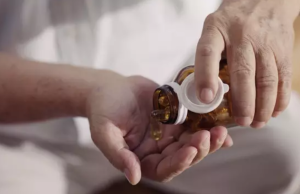Vitamin C-rich fruits are also rich in flavonoids, antioxidants, and phytonutrients that provide a wealth of health benefits.
Plus, homegrown strawberries are organic, taste much better than store-bought, and can save you a lot of money because you don’t have to pay supermarket prices—on average, a box of strawberries on the market can range from $40 to $40. between $40. $60, the bottom ones are usually small, pale and crushed
Decide where you want to grow your strawberries
As mentioned, strawberries can be grown in containers on balconies, patios, or in pots. If you have limited horizontal space, consider growing strawberries in hanging baskets or stacked pots – this will allow you to take advantage of vertical planting space.
Note that a sunny spot outside your home is the best place to grow strawberries, although you can get a slightly smaller harvest in less than half a day of direct sunlight. Avoid windy areas to prevent pollinating insects from reaching the flowers.
Tip: For shady locations, try growing alpine strawberries (harder to source, but available in select online nurseries), which require more care and patience but still yield delicious fruit.

Recycle is important while choosing containers
First, you don’t need to invest in fancy containers or crock pots. You can even grow strawberries using 2 liter plastic bottles, wooden crates and remodeling buckets. Whether you choose a container made of clay, plastic, wood, or another material, make sure its soil is at least 12 to 14 inches deep to provide room for the plant’s roots to grow.
How many plants you can put in depends on the width of the container, as you should keep the plants around 25-30 cm so they spread out horizontally.
TIP: There are many advantages to growing strawberries in any type of barrel or barrel. Plants can be moved to chase the sun (so they can enjoy more light than usual) or raised from the ground to avoid snail interest!
Prepare a soil that will make your strawberries happy

Strawberries like rich, loamy soil that drains well. Start with what you have and add plenty of organic matter (such as compost, shredded bark or peat moss) as well as some sand or grit. Most potting soil mixes sold at nurseries will be sufficient. Ensure that the soil is free of weed roots and that the container has drainage holes in the bottom.
Tip: If growing in a hanging basket, line the basket with sphagnum moss before putting soil to retain moisture for the plants. Sphagnum moss will also allow for the plant to grow out the sides of the pot, which looks nice.
The best soil for growing strawberries

Strawberry plants grow best in well-drained soil rich in organic matter. A week before transplanting, work in a few inches of organic compost. Strawberries prefer slightly acidic soil with a pH between 5.5 and 6.5.
When growing strawberries in containers, use good-quality potting soil mixed with organic compost. Try this easy DIY potting soil recipe.
The most effective fertilizer for strawberries

There are three main nutrients in plant fertilizers: nitrogen (N), phosphorus (P) and potassium (K). Nitrogen promotes leaf growth, phosphorus supports a healthy root system, and potassium promotes fruiting and flowering.
When transplanting strawberries in your home garden or container, add a tablespoon of all-purpose organic fertilizer to the bottom of the hole.
Once your plants start blooming, switch to fertilizers that are higher in phosphorus and potassium to boost fruit production in early summer. For best results, fertilize your plants monthly.
Harvest strawberries
At harvest time, it’s important to know what variety of strawberries you have. Some varieties produce throughout the season, while others only bear fruit at specific times.
The evergreen strawberries will bear two or three kinds of fruit this season. Look forward to harvesting your first harvest from your permanents in late spring and early summer, a second harvest in midsummer in cool climates, and a final harvest in late summer to early fall.
Day neutral strawberries bear fruit throughout the growing season. Some gardeners recommend pinching off new buds of day-neutral strains within a few weeks of transplanting to encourage the plant to focus its energy on growth. Once it has approximately doubled in size, allow the bud to mature.
Strawberries in June have high fruit yields in late spring to early summer. The June varieties set buds the previous fall, with flowers blooming in early spring and harvesting in June.




















